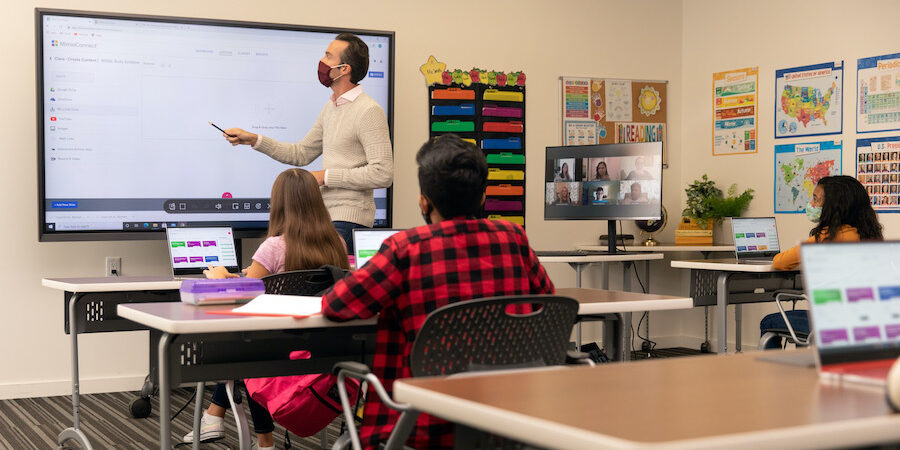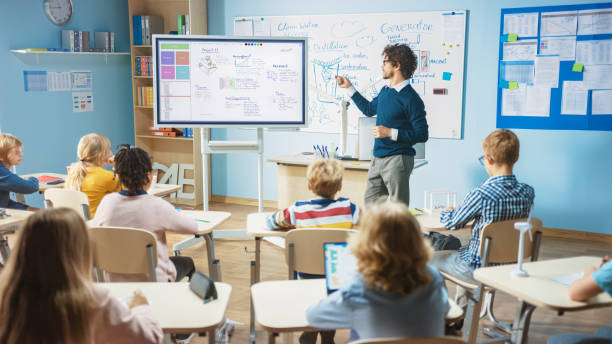Checking Out the Different Teaching Methods in Primary Scientific Research Education And Learning Today
The landscape of main scientific research education and learning is developing, with numerous mentor techniques obtaining prominence in contemporary class. Inquiry-based understanding, hands-on experiments, and the assimilation of technology are redefining just how instructors engage young minds. In addition, collective techniques and distinguished direction are being employed to accommodate the varied requirements of students, improving both interaction and understanding. As we analyze these methodologies, inquiries occur concerning their effectiveness and the effects for future educational methods. What might these shifts in approach mean for the future generation of students?
Inquiry-Based Understanding
Inquiry-Based Understanding (IBL) is an instructional approach that urges trainees to check out clinical concepts with questioning, examination, and hands-on experimentation. This technique highlights the duty of students as active participants in their learning, promoting critical thinking and analytical abilities. By involving with real-world inquiries, students come to be interested and determined, which enhances their understanding of scientific concepts.
In IBL, educators work as facilitators, guiding students as they navigate their questions as opposed to providing details straight. This student-centered method enables differentiation, fitting numerous finding out styles and speeds. Trainees establish abilities in creating theories, designing experiments, and evaluating information, which are crucial for scientific literacy.
In addition, IBL fosters partnership among trainees, urging them to share searchings for and concepts. This collective query promotes social skills and a sense of community within the classroom. The procedure of query encourages resilience, as trainees learn to accept failing as a tipping rock toward understanding.
Hands-On Experiments
Hands-on experiments are an essential element of effective science education and learning, enhancing the concepts of inquiry-based knowing. These experiments allow pupils to involve directly with clinical ideas, fostering a deeper understanding via experiential discovering. By controling products and observing end results, young learners can grasp abstract concepts in tangible ways.
Such tasks promote essential thinking and problem-solving abilities, as students assume outcomes, conduct experiments, and examine results. This procedure motivates them to ask inquiries, improve their understanding, and create a scientific mindset. In addition, hands-on experiments can be customized to diverse knowing styles, ensuring that all students have the possibility to engage meaningfully with the material.
Moreover, hands-on experiments frequently motivate collaboration among peers, promoting synergy and communication skills. Operating in teams enables students to share ideas, discuss searchings for, and find out from each other, which enhances their total instructional experience.
Integrating hands-on experiments into the main scientific research curriculum not just enhances the learning environment however additionally grows a long-lasting rate of interest in scientific research. By proactively taking part in their education and learning, pupils are more probable to establish a passion for clinical questions that expands past the class.

Innovation Integration
Integrating innovation into main science education and learning has actually come to be significantly important in cultivating trainee interaction and improving learning end results. Using electronic devices, such as interactive simulations, digital labs, and instructional software program, gives pupils with possibilities to explore scientific ideas in innovative methods. These sources assist in a deeper understanding of complex subjects by permitting students to picture and control variables that would be not practical in a typical classroom setup.
In addition, innovation assimilation encourages personalized learning experiences. Pupils can proceed at their very own speed, revisiting tough concepts with multimedia sources, which accommodate different understanding styles. This adaptability not just supports specific development yet likewise cultivates a sense of autonomy in learners.
Additionally, innovation functions as a bridge to real-world scientific research, attaching pupils with present study look here and professional payments. Accessibility to scientific journals and online data sources expands pupils' perspectives on clinical questions and promotes vital assuming skills.
Collaborative Learning
Joint knowing plays a vital function in key scientific research education by cultivating teamwork and interaction skills among pupils. This approach motivates learners to interact, share expertise, and take part in problem-solving, which boosts their understanding of scientific ideas. By taking part in group tasks, students learn to verbalize their concepts, pay attention to diverse point of views, and bargain solutions, all of which are important skills in both real-world and scholastic contexts.
:max_bytes(150000):strip_icc()/GettyImages-1475870499-b4c3034fc17f494ea9aba128e6140d6e.jpg)
Study shows that collaborative knowing can lead to enhanced inspiration and interaction in science topics, as pupils locate pleasure in shared experiences (primary science tuition Singapore). Additionally, this technique prepares students for future joint endeavors, outfitting them with the skills required for efficient teamwork in greater education and specialist environments. Inevitably, accepting joint knowing in main scientific research education can significantly enhance the understanding experience and promote a deeper understanding of scientific query
Set Apart Direction

Set apart instruction can manifest in various ways, such as varying the material, processes, or products of understanding. For instance, instructors might use tiered jobs that provide differing degrees of intricacy, permitting trainees to function at their particular preparedness degrees. In addition, flexible organizing techniques can promote cooperation amongst pupils with various capabilities, promoting peer understanding.
Analysis plays an essential role in this technique, as it educates direction and aids teachers comprehend each student's unique needs. Formative evaluations, such as monitorings and quizzes, can assist teachers in readjusting their techniques to improve discovering outcomes. primary science tuition Singapore. Eventually, by carrying out separated direction in key science education and learning, educators can grow a more effective and fair knowing atmosphere, encouraging all trainees to reach their full potential in understanding you can check here scientific phenomena
Verdict
In recap, the varied teaching strategies in primary science education and learning, including inquiry-based understanding, hands-on experiments, technology combination, collaborative discovering, and separated guideline, collectively add to an extra efficient discovering atmosphere. These techniques advertise crucial thinking, problem-solving abilities, and a deeper comprehension of clinical concepts. By implementing these approaches, instructors can produce interesting and helpful classrooms that attend to the varied needs of students, ultimately fostering a lifelong interest in scientific research and improving academic achievement.
Inquiry-Based Knowing (IBL) is an instructional strategy that urges students to explore clinical principles through questioning, examination, and hands-on testing.Collective understanding plays an important duty in primary scientific research education by cultivating teamwork and communication abilities among trainees.Study suggests that collaborative learning can lead to raised inspiration and interaction in science subjects, as trainees find enjoyment in shared experiences.In promoting a comprehensive learning environment, separated direction arises as a crucial approach to accommodate the varied needs and capabilities of trainees in main science education. Inevitably, by implementing differentiated guideline in main science education and learning, teachers can cultivate an extra efficient and equitable learning setting, empowering all pupils to reach their full possibility in understanding scientific phenomena.